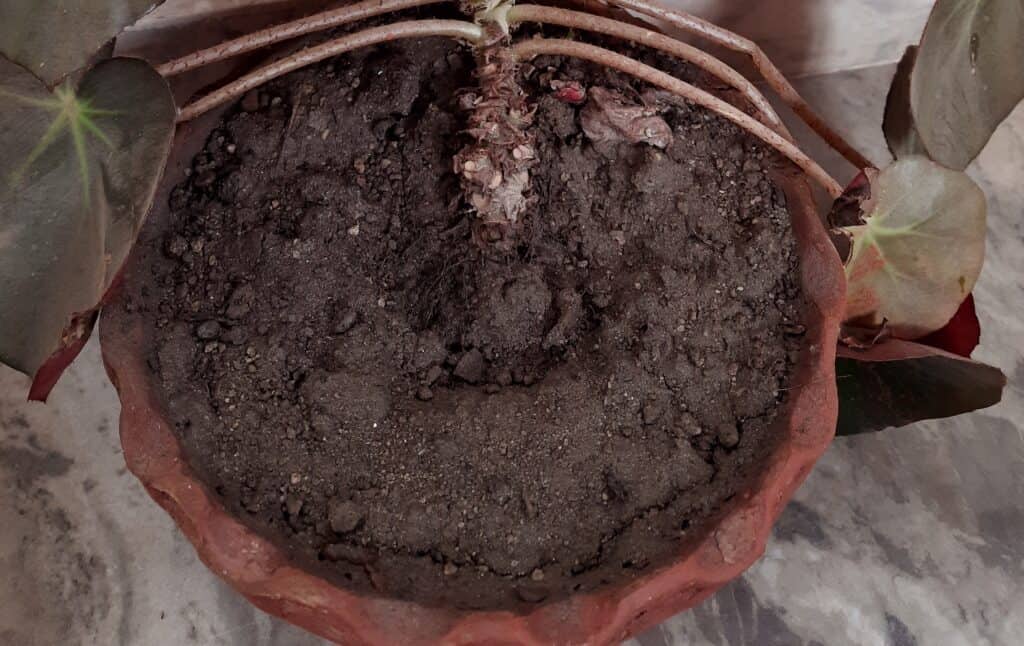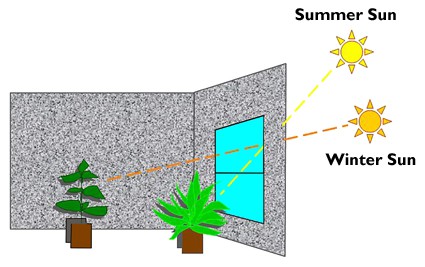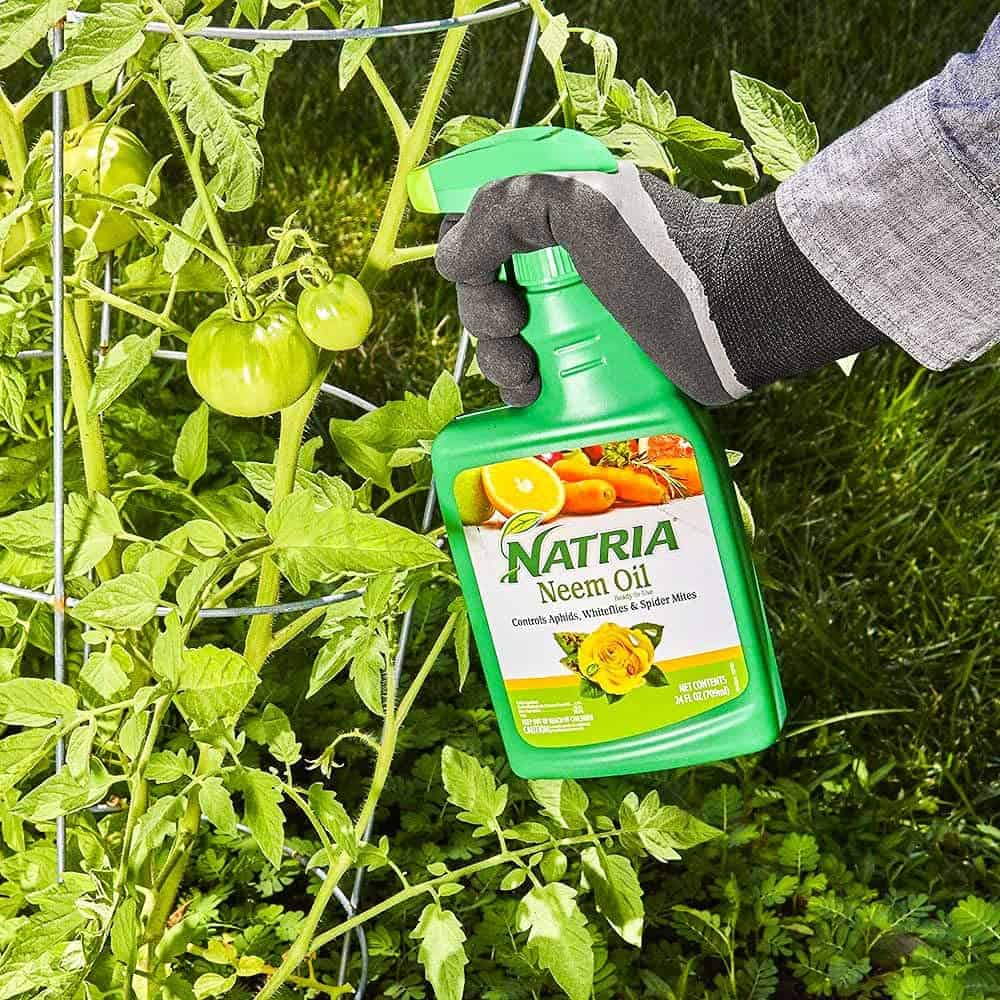Fittonia plants are instant attention grabbers with lush green leaves contrasted by their white, red, or pink veins. No wonder they have made a name for themselves among the indoor plant classics.
But along with lifting the vibrancy in the room, they are also good at keeping you scratching your head with their frequent tantrums.
Generally, Fittonia becomes limp and droopy because of improper watering. Other reasons include low humidity, exposure to direct sunlight, lack of nutrition, and pests infestation.

Fittonias can quickly grow limp and look lifeless when their specific requirements aren’t met.
In this article, we will walk through these problems individually and talk about what we can do when we encounter them.
Let’s get started.
Table of Contents Show
Is it Normal for Fittonia to Become Limp and Droopy?
Fittonia plants are known to be dramatic. Their natural environment is a tropical rainforest where they grow as ground cover with plenty of moisture and humidity.
Sunlight sparsely passes through the canopy of trees, so they also prefer indirect sunlight.
It is normal for your Fittonia to droop when the plant doesn’t get these conditions in its indoor setting.
If you see your leaves significantly droopy, go ahead and pour some water over your plant and wait for a few minutes.

If you still don’t see the leaves reviving, the problem might lie elsewhere. We will talk more about this in the next segment.
Causes of Limp and Droopy Leaves in Fittonia [With Solutions]
Fittonia limps and droops due to a variety of direct and indirect circumstances.
Factors like underwatering, overwatering, lack of humidity, too much light, fertilizing issues, pests, etc., make this plant look gloomy and droopy.
Let’s know about their solutions and preventive measures in detail.
1. Underwatering Fittonia
Your Fittonia is a very expressive plant. It will let you know if you are not fulfilling its water needs.
Sometimes we can miss a watering schedule or two. This will render the soil dry, and the plant will not get the required nutrients from the soil.
You can tell that the plant is underwatered when it exhibits signs like droopy leaves, brown edges on leaves, crispy leaves, etc.
But you don’t need to worry; your plant will bounce back to healthiness if you water it properly.
Solutions
- Watering the plant immediately is always the first step. Remember not to overwater the plant.
- Keep the plant constantly moist. Do the finger-soil test and water the plant as soon as you notice that the surface is drying up.
- Water, the plant from top-down until the soil, is moist. Let the extra water flow out of the drainage hole.
- Water your plant every 1-2 days in summer and 2-3 times a week, and it works best for Fittonia.
- Even if your plant is back healthy, you should check it constantly to avoid any future occurrence of underwatering symptoms.
2. Overwatering Fittonia
True, your Fittonia does hate dry soil, but that doesn’t mean you torture it by making it stand on wet and soggy soil for too long.
If Fittonia stands on very soggy and wet soil for too long, it will limp and droop. Severe cases can lead to root rot, which can eventually lead to the death of the plant.
Too much water in the soil directly affects the ability of the plant to breathe. It blocks the air pockets in the soil, and the oxygen level in the plant reduces.
Other symptoms of overwatering include yellowing and discolored leaves.

Solutions
- Stop watering the plant for a few days and let the plant dry out on its own. If the damage is not severe, you’re in luck; the plant will heal automatically.
- To check for the root rot, gently remove the plant and observe the roots. Prune the brown roots to avoid transferring the damage to other roots.
- Rinse the pot with bleach solution. Dip the healthy roots on fungicide solution to kill any root rot fungus.
- Repotting the plant in a fresh and moist potting mix and a pot with a good drainage hole is a great solution. Make sure the pot is not too big, though.
3. Low Humidity
Fittonia is a tropical plant, and like any other plant of that category, it loves high humidity. Due to its demand for high humidity, it is sometimes considered a hard plant to grow.
The leaves may droop, and the appearance may deteriorate if the air becomes too dry.
When the humidity conditions are not met, the plant will show other symptoms like curling, brown tips and edges of leaves, wilting, etc.

If the humidity drops below the 40% mark, the plant may suffer severe damage.
Solutions
- Mist the plant if you notice the symptoms of low humidity. You can do the misting once or twice a day with your regular watering schedule.
- Place your plant on top of a pebble tray. Evaporation of water increases humidity.
- Use a humidifier near the plant for a quick rise in humidity levels.
- Group your plant with other plants to maintain a humidity-sharing environment.
- You can place the plant in a terrarium to maintain the humidity.
- The kitchen and bathroom are the most humid areas in your household. You can place your plant near these places to maintain humidity.

4. Improper Lighting Condition
In its native zone, the plant grows in the shade of trees, where it gets bright but indirect sunlight. So, that’s what you should be looking for your Fittonia: bright but indirect sunlight.
If Fittonia shows symptoms like scorched, dry, and wrinkled leaves and your plant is limp and droopy, you may not be maintaining its light needs.

This plant is too picky about its light needs. A slight anomaly in lighting conditions can cause the plant to lose its shape and droop.
According to a report by NCBI, low light hinders a plant’s metabolic process including photosynthesis and antioxidant characteristics and carbon, nitrogen fixation.
Also, in bright, direct light, the plant loses water quickly, and the soil will be dry, bringing other problems for the plant. So it’s better if you place your plant in the east or north-facing window.
If your plant is not getting enough light, it may lose its colors, and the plant’s growth will slow down.
Did you know? Light color plays an important role in plant’s growth. You may be interested in reading; What light color is best for plant’s growth?

Solutions
- Relocate the plant to a spot where light doesn’t fall directly. Keep the plant in a bright place, but don’t let direct sunlight hit it.
- Remember, if you have a colorful variation, do not keep the plant in low light, or you may end up losing the colors.
- Do not over-expose your plant to grow lights. Place them under the light intensity of 1500-2500 Foot Candles.
- You can place your plant in direct sun for 1-2 hours but make sure to keep the soil moist.
5. Fertilizer Issues
Fittonia is a herbaceous perennial plant that reacts well to fertilizers.
Providing excess fertilizer will bring up issues like foliage burn and cause the plant to droop and limp. Under fertilization usually doesn’t have any severe problems.
Excessive fertilizer will lead to salt accumulation on the soil surface and increase the nitrogen content. Too much nitrogen will weaken the stem and direct the plant to droopiness.
Most sellers provide this plant with a nutritional potting mix. So, you may not have problems with under-fertilizing.

Solutions
- You can feed your plant with balanced houseplant fertilizer every 3-4 weeks from spring to fall. For best results, dilute the fertilizer to half strength.
- Occasionally, wash the top layer of the soil with water to wash out excess fertilizer and salt accumulations on the soil.
- Repot the plant to a new and fresh potting mix if the damage is severe.
- Do not fertilize your plant during fall and winter as it enters its dormant phase and grows slowly.
6. Repotting Shock
Did you repot your Fittonia in recent times, and the plant is being limp and droopy?
Plants like Fittonia tend to be stressed if you repot them and show signs like drooping, wilting, and limp.
Moving a plant that throws tantrums about conditions like Fittonia can be quite a tedious task.
Repotting shock is easier to treat than other problems that cause Fittonia to droop and limp. The plant may take a week or two to adjust to the new conditions.
Solutions
- Let the plant adjust to the new conditions on its own. It may take some time, but it will eventually bounce back.
- Cut back on fertilizing the plant until it recovers fully.
- Prepare a sugar and water solution and pour it over the plant to prevent the transplant shock from getting severe.
7. Pests Infestation
Colorful plants like Fittonia are more susceptible to pests infestation.
Drooping leaves and plant death can be caused by the infestation of pests and fungal diseases.
Pests like Aphids, Fungus Gnats, Mealybugs, Broad mites, and Thrips attack the plant if the conditions are not good.
Let’s see a table for the pests and their symptoms.
| Pests | Symptoms |
|---|---|
| Aphids | Pear shaped, soft-bodied insects Honeydew and sooty mold can be seen on plants |
| Fungus Gnats | Small black flies Webs like "spider-webs" can be seen on the soil surface |
| Mealy Bugs | White cottony masses Honeydew and sooty mold can be found |
| Broad Mites | Foliar necrosis of vegetative shoot apex Cupped, puckered leaves can be seen |
| Thrips | Small, thin insects Leaves become curled and distorted |
Solutions
- You can drench the soil to get rid of root aphids. Make sure excessive water doesn’t accumulate on the soil.
- You can use commercial nematodes to get rid of fungus gnats without any adverse effects on the plant.
- Insecticidal soaps, neem oil, or horticultural oil can be used to get rid of mealybugs.
- Miticides like abamectin, pyridaben, chlorfenapyr, etc., can be used to get rid of mites.

Confused how to use neem oil on indoor plants? Our article will help you.
How to Prevent Limp and Droopy Leaves in Fittonia?
If you diagnose the problem in its early stages, you can treat any problems that can cause the plant to droop or limp.
Let’s look at some ways to avoid the problem in the first place.
- Ensure the plant is getting light of at least 100 FCs to prevent it from dying.
- To ensure optimum growth, place the plant in a temperature ranging from 60°F to 80°F. Extreme cold can cause the plant to droop its leaves.
- Make a peat-based potting mix for the plant and ensure it doesn’t stay waterlogged and has a good drainage provision.
- You can keep your plant in a tight and small pot but repotting every 1-2 years is necessary.
- Maintain the moisture content around the plant but remember, too much moisture can lead the plant to root rot.

Thinking about propagating Fittonia? Read our article: “How to Propagate Fittonia (Nerve Plant)?“
Editor’s Voice
The best thing about Fittonia is that it communicates with the user about its anomalies.
So look out for signs of problems. If you are cautious and identify the problem sooner, you’ll be able to make your plant healthier in no time.
Happy Gardening!
